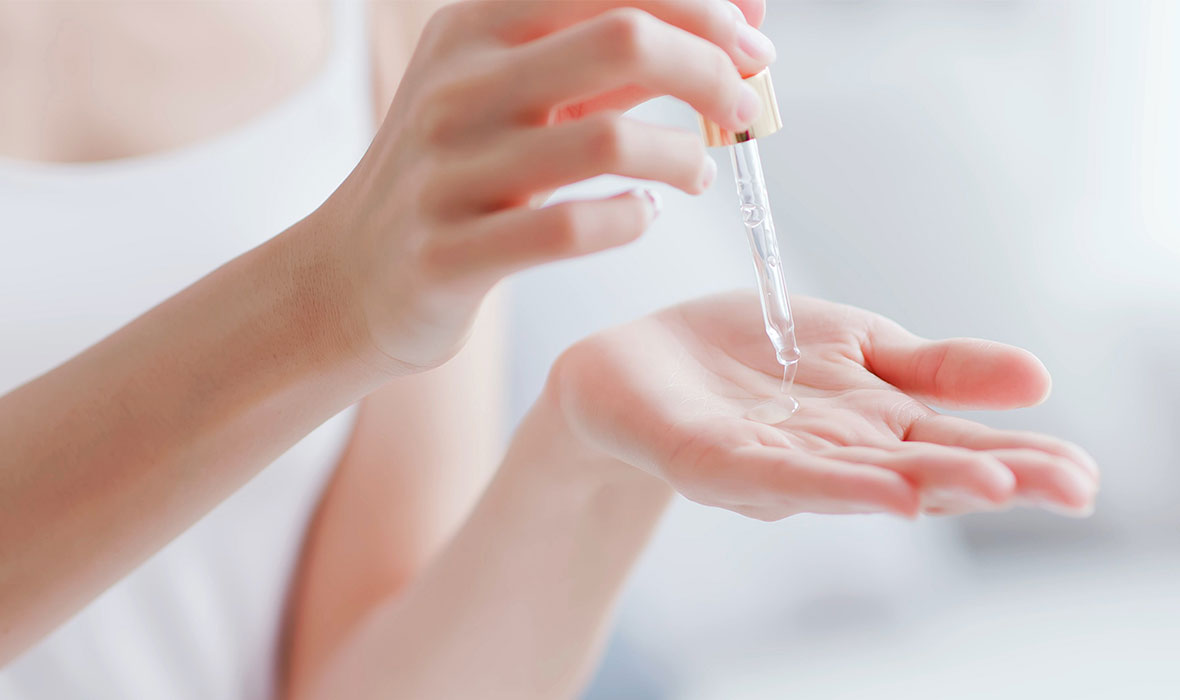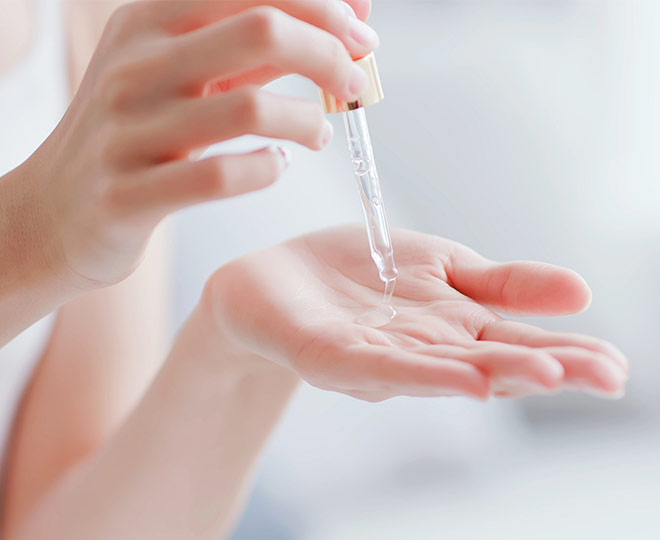Have you been searching for a skincare ingredient that minimizes and unclogs pores and fights the signs of aging at the same time? Then it’s time you learn about glycolic acid, one of the most sought-after ingredients in the skincare industry. Here’s how glycolic acid works and why you should incorporate this versatile ingredient into your skincare routine.
What is glycolic acid?
Glycolic acid is a commonly used alpha hydroxy acid (AHA) that’s derived from sugar cane. Alpha hydroxy acids (AHAs) are synthetically derived versions of naturally occurring, non-toxic fruit acids. AHAs are used in many skincare formulas and, out of all the AHAs, glycolic acid has the simplest structure, is the smallest, and possesses the lowest molecular weight. That makes it easy for glycolic acid to penetrate the skin, making it incredibly effective.
What does glycolic acid do?
So what exactly does glycolic acid do? One word: exfoliation. An AHA removes dead skin cells so they can’t mix with sebum and clog your pores. Think of glycolic acid as a superpower exfoliator that helps keep skin healthy by ensuring your pores are gunk free. Glycolic acid is also effective at helping to improve the appearance of acne scars and dark spots because it helps shed those dead cells and refresh the skin’s surface.
Can anyone use glycolic acid?
It’s important to understand how to use glycolic acid, especially if it’s your first time. There are different glycolic acid uses, so depending on what type of topical product you’re using, always conduct a patch test first to make sure your skin can tolerate it.
Apply glycolic acid in the evening because it will make your skin more sensitive to the sun. There are other benefits to applying glycolic acid at night, since nighttime is when your skin repairs itself — up to three times faster than during the day! As you catch your zzz’s, the skin is more permeable and more receptive to glycolic acid’s healing properties.
What are the benefits of glycolic acid?
Glycolic acid boosts your skin’s natural exfoliating process and helps your skin retain moisture. Why is this important? Because when acne-prone skin gets too dry, the body will overproduce oil to compensate. More oil means a more fertile environment for new acne breakouts. Glycolic acid’s extra moisture boost also counterbalances the dryness that can sometimes come from using benzoyl peroxide and salicylic acid, two ingredients often found in acne treatments.
But that’s not all. Glycolic acid can also tackle telltale signs of aging. Because glycolic acid molecules are the smallest out of all AHAs, they can penetrate deep into your skin and create quite an impact. The acid stimulates collagen production, which may help soften fine lines and wrinkles while making the skin look and feel more toned, even, and radiant.
Are there any side effects of glycolic acid?
All alpha-hydroxy acids can mildly irritate sensitive skin, but in concentrations less than 10% (what you’ll find in most skincare products), most people don’t have issues. However, if you start to experience redness, peeling, or irritation, reduce application to 2-3 times a week until your skin builds up tolerance. If any of that irritation persists, make sure you stop using the product and consult your doctor.
When it comes to using glycolic acid with retinol or another acid, it’s possible that using both at once may be too much. Consider applying glycolic acid one night and retinol or lactic acid the next and continuing to switch between them. If you do use both simultaneously, keep an eye on your skin. If it starts to peel or become irritated, it’s a sign you’re overdoing it.
No matter how often you use glycolic acid, always wear sunscreen any time you go outside because it can make your skin extra-sensitive to sunlight.
Glycolic acid products
While salicylic acid and benzoyl peroxide may be the two most recognized acne-fighting ingredients, glycolic acid products rank right beside them in importance. It’s a super-exfoliator that gets rid of dead skin cells so they can’t clog your pores. The hydration and healing qualities of glycolic acid help with the appearance of post-acne marks and discoloration and keep your skin smooth, resilient, and healthy-looking.
Given its potent exfoliating abilities, it should come as no surprise that glycolic acid is one of the ingredients in both the Proactiv+® 3-Step System and Proactiv® Solution 3-Step System.
Some proactiv acne products with glycolic acid include:
- Proactiv+ Skin Smoothing Exfoliator: Step 1 of the Proactiv+ 3-Step System, this creamy, cushiony exfoliator is formulated with crystal benzoyl peroxide to clear up acne blemishes and help new ones from forming. It also contains tiny exfoliating beads and glycolic acid, which gently resurface the skin to reveal a smoother, softer-looking complexion.
- Mark Correcting Pads: Each convenient, single-use pad helps remove dead skin cells and exfoliate away rough, dull layers, revealing the new, smoother skin below. The pads are designed to resurface the skin with exfoliating glycolic acid, helping to fade the look of post-acne marks and reduce the appearance of fine lines, wrinkles, and enlarged pores.
- Re-Texturizing Toner: This unique formula helps remove dead skin cells and decongest skin thanks to exfoliating ingredients like glycolic acid and salicylic acid that help unclog pores.
- Clear Zone Body Pads: Our Clear Zone Body Pads contain the time-proven acne effectiveness of salicylic acid with glycolic acid’s skin-enhancing properties. Specially formulated for treating oily skin, our dual, textured 3″ pads help lift away dirt build-up off the pores.
- Proactiv Revitalizing Toner: Step 2 of the Proactiv Solution 3-Step System, this botanical-rich, alcohol-free toner helps keep pores from clogging by removing excess surface oil and dead skin cells. It features glycolic acid to gently exfoliate away dead skin cells, revealing healthy skin underneath.






